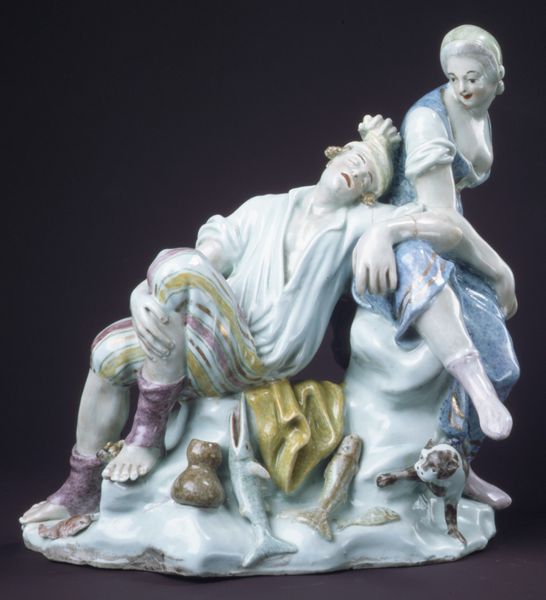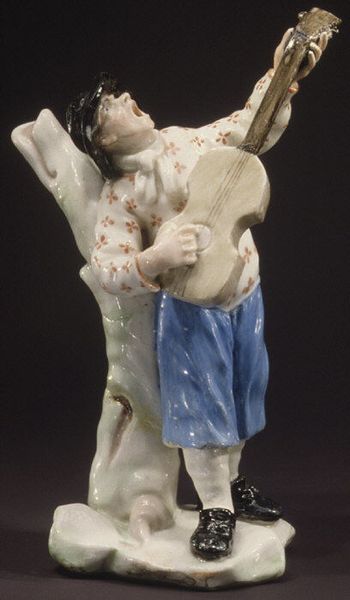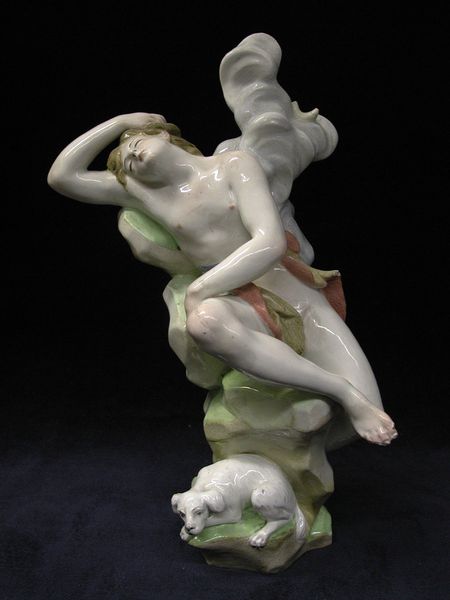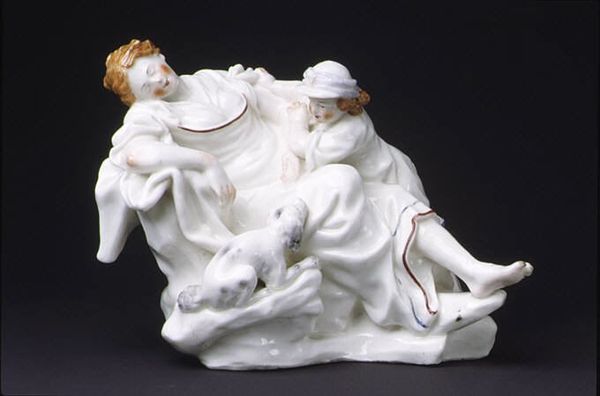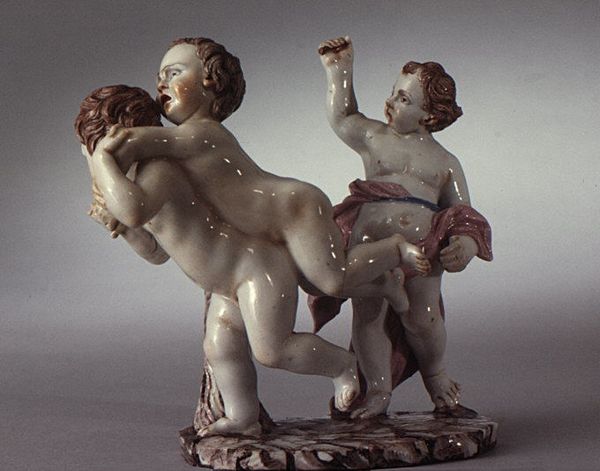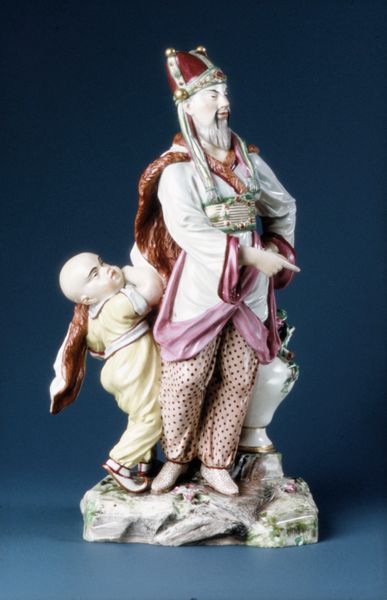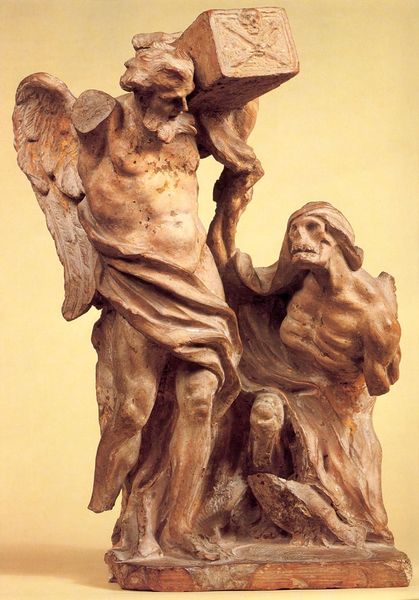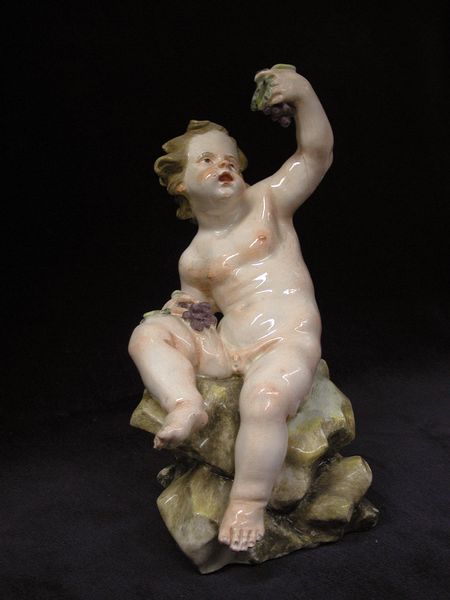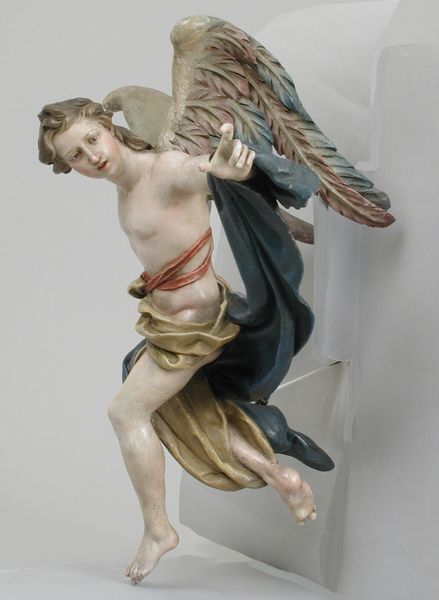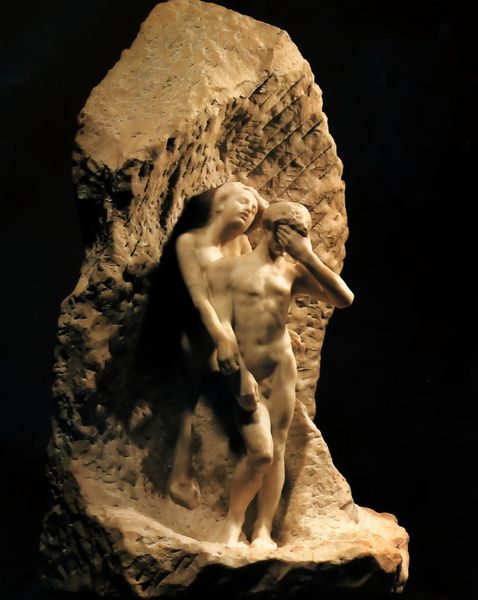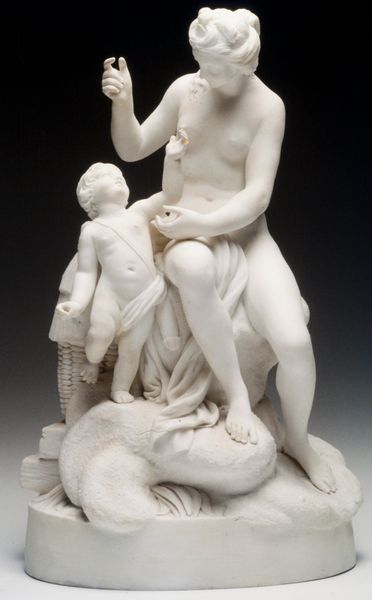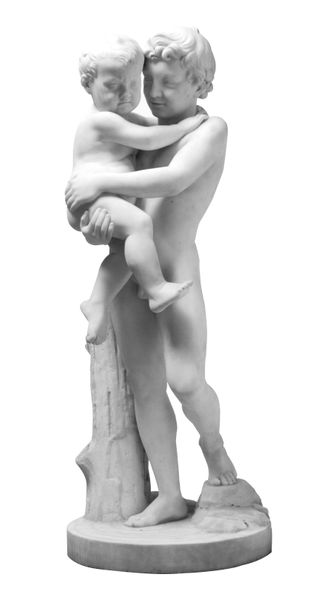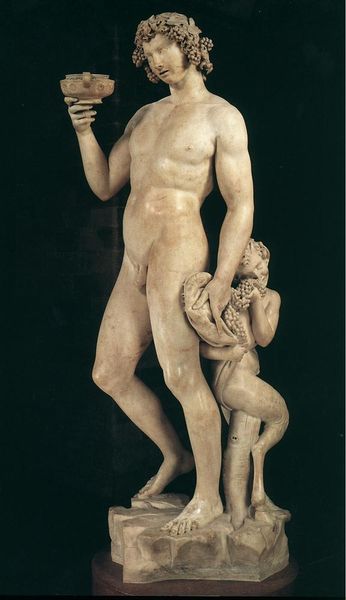
ceramic, porcelain, sculpture
#
animal
#
ceramic
#
porcelain
#
figuration
#
sculpture
#
genre-painting
#
decorative-art
#
rococo
Dimensions: Height: 7 1/4 in. (18.4 cm)
Copyright: Public Domain
Curator: This intricate sculpture, entitled "Asia," hails from the Nymphenburg Porcelain Manufactory and dates roughly between 1758 and 1770. It's currently held at the Metropolitan Museum of Art. What are your initial thoughts? Editor: My first impression is…awkwardly colonial. The figure, perched somewhat precariously, the strangely subservient animal at its base, it feels like a European fantasy attempting to embody an entire continent, reduced to a decorative object. Curator: Precisely. The medium itself, hard-paste porcelain, is crucial here. Nymphenburg, like other European factories, invested heavily in replicating the techniques the Chinese had mastered for centuries. The control over the materials, the kiln temperatures—it all signifies technological dominance. And then, the Rococo style... such flamboyance to create a visual commodity of conquest. Editor: Right. And let's not forget the historical context: This was an era of intense European exploration, trade, and, yes, domination in Asia. Sculptures like this played a role in shaping public perceptions, solidifying ideas of European superiority in society and their right to possess other nations’ raw materials and labor. Curator: The choice of a domesticated animal further reinforces this idea, does it not? Asia presented as something tamed, compliant, subservient. The artist’s decision is not happenstance when European workshops depend upon foreign animal materials. What is at stake is this sculpture would not exist if animals did not supply essential animal outputs such as bones for creating this desirable object. Editor: Absolutely. It speaks volumes about the power dynamics at play, a visual manifestation of colonial aspirations which in turn creates public support. Looking closer, I'm also interested in this strange object being gripped tightly in his hand... what does it symbolize and signify for our culture? Curator: Good point, such details are not often analyzed enough. To look past and not to evaluate such points leads to overlooking how such small components aid in creating an artwork's legacy. Editor: I leave now with even more questions to examine; it's quite amazing how a deeper lens can expose such deeper insight. Curator: Indeed. Considering process, product and politics opens this to different angles and understandings to challenge even the most steadfast historical interpretations of art's purpose and place within civilization.
Comments
No comments
Be the first to comment and join the conversation on the ultimate creative platform.
